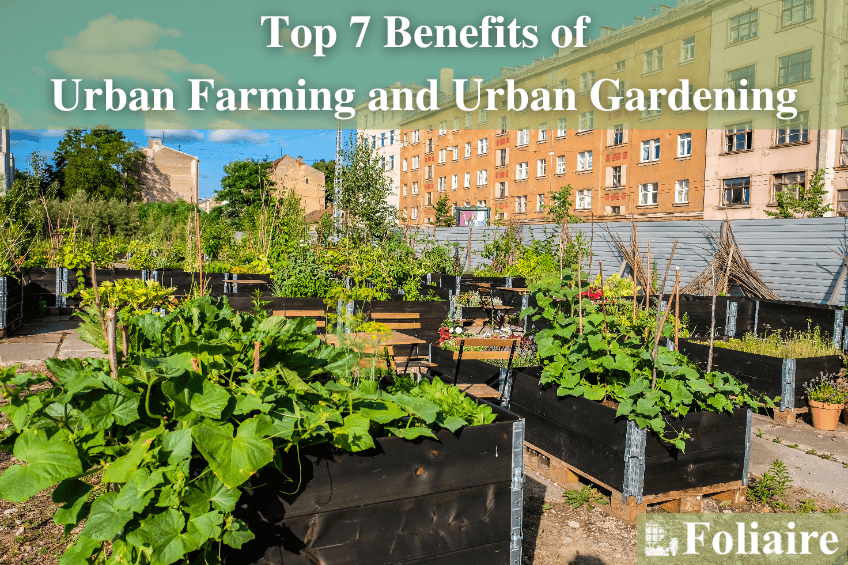City Blooming - The Facts
City Blooming - The Facts
Blog Article
Some Ideas on City Blooming You Need To Know
Table of ContentsOur City Blooming IdeasSome Of City BloomingThe smart Trick of City Blooming That Nobody is DiscussingAll about City BloomingSome Ideas on City Blooming You Need To Know
Fascinated in expanding food available in the City of Chicago? Believing about starting a neighborhood garden? Modifications to the Chicago Zoning Ordinance allow agricultural usages like community gardens and metropolitan farms in numerous components of the city. Below is a checklist of regularly asked concerns concerning the regulations and regulations that cultivators ought to think about when planning a city farming project.
The zoning amendment does not change any various other codes handling composting, structure permits, purchasing or leasing City owned residential property, business licenses or ecological contamination. There are existing codes that control these problems and they stay in full result and may be relevant to your project. Area gardens are usually possessed or managed by public entities, public organizations or community-based organizations and preserved by volunteers.
Urban ranches expand food that is planned to be marketed, either on a nonprofit or for-profit basis. Due to their business function, city farms need a service license.
Fascination About City Blooming
Composting is allowed but just for plant material that is produced and made use of on site. The amount of garden compost material can not exceed 25 cubic backyards at any kind of provided time according to the criteria in 7-28-715 of the City's Municipal Code. Yes. Due to the fact that the soil at most brand-new garden websites needs amending, compost, dirt, wood chips, or other products can be obtained to construct or boost the expanding space - indoor plants.

If a building authorization is needed after that the hoophouse will certainly be thought about an accessory structure. You can find out even more about the building authorization demands by calling the Department of Structures. The 25,000-square-foot dimension limitation is meant to protect against a single area garden from controling a provided block or interfering with the block's existing household or business character.
The restriction does not relate to yards situated in Public Open Space (POS) areas. Can there be more than one area garden that is 25,000 square feet on a solitary block? Yes. The dimension limitation puts on private gardens, not to specific blocks. No. Fence is not required, nonetheless, gardens that have big parking lot might be required to set up secure fencing or various other landscape design attributes.
Indicators on City Blooming You Need To Know
B1 & B2 districts need that all business usage tasks be performed indoors. R areas restrict commercial activity. The laws reflect the objective and intent of the Zoning Code. Is secure fencing needed for city ranches? Yes. Fencings might be needed, in Read Full Report addition to landscaping and testing, for specific parking lot and outdoor work or storage areas depending upon place and the details task happening.
Urban ranches call for building permits and zoning authorizations prior to building (eco-friendly practices). Various other forms of city testimonial may be required depending on details structures, activities, dimension, landscaping, licensing, public health and stormwater monitoring issues.
The Division of Business Affairs and Consumer Security can assist identify the details type of company license that's needed. Off road vehicle parking is needed for most commercial jobs in Chicago. The called for number of vehicle parking rooms is based on the number of employees working on site and not the square video of the growing area.
The City Blooming Ideas

A metropolitan farm can market compost product generated on site, however, the operation needs to conform with the laws in 7-28-715 of the Chicago Municipal Code. Aquaponic systems are permitted indoors on urban ranches in several zoning districts.
As much as five hives or nests of honey may be kept as an accessory use. Beekeepers have to sign up with the Illinois Division of Agriculture. For additional information about the recommended zoning amendment you might call the Department of Housing and Economic Growth, Bureau of Planning and Zoning at 312.744.8563.
Farming in cities and metropolitan areas A metropolitan ranch in Chicago. Urban farming describes different practices of growing. https://pubhtml5.com/homepage/baapp/, handling, and dispersing food in city locations. The term likewise puts on the location tasks of animal husbandry, aquaculture, beekeeping, and horticulture in a metropolitan context. Urban agriculture is identified from peri-urban farming, which happens in rural locations at the side of residential areas.
Indicators on City Blooming You Should Know
, that seek to create social networks established on a shared principles of nature and area holism. These networks can create by way of official institutional support, ending up being incorporated into regional community planning as a "change town" motion for lasting city growth.
In either instance, the a lot more straight accessibility to fresh veggie, fruit, and meat products that may be realised with urban agriculture can boost food safety and food safety while reducing food miles, leading to lower greenhouse gas discharges, thereby contributing to climate modification reduction. Some of the first evidence of urban farming comes from Mesopotamia.
Report this page